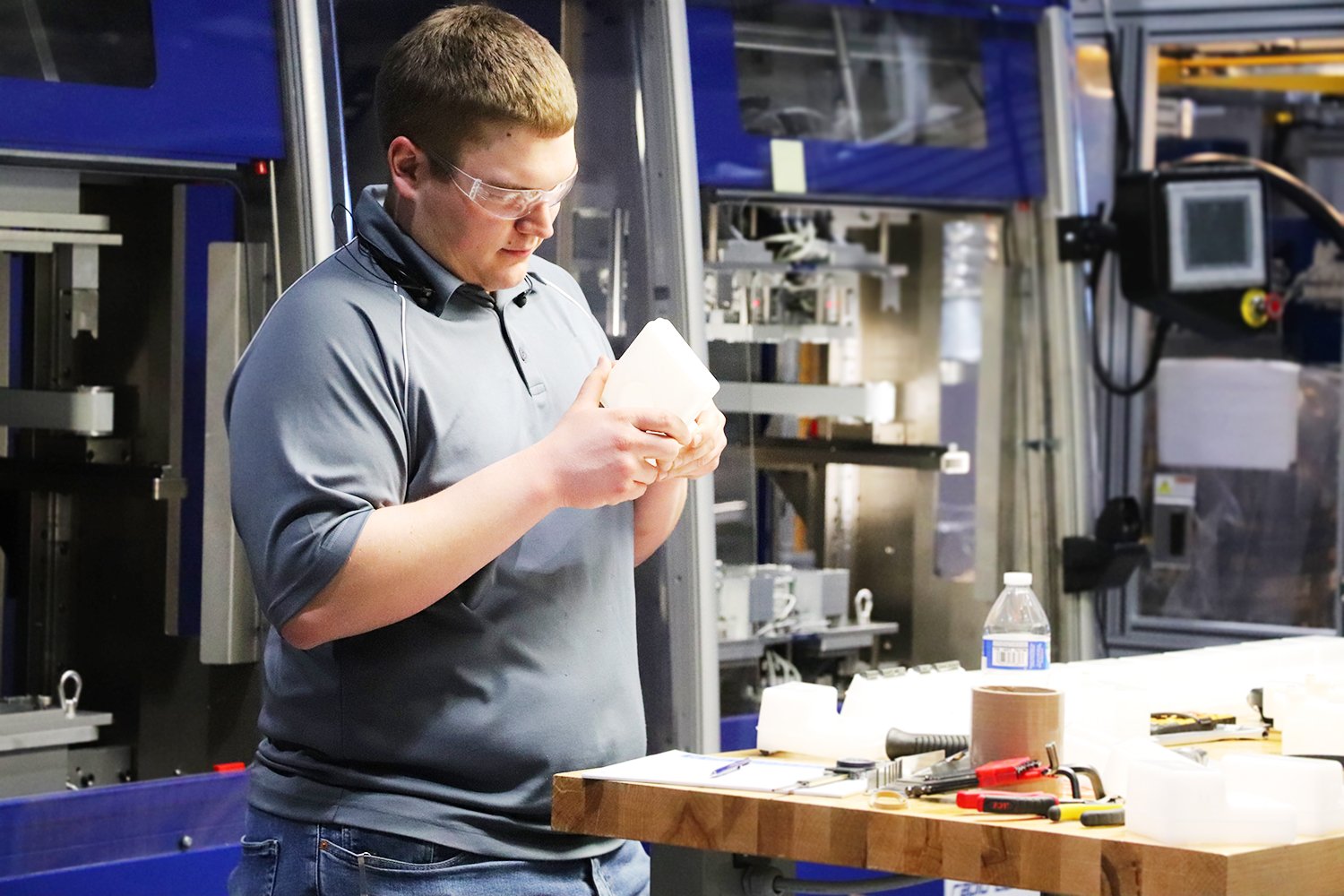Hot-Plate Welding: Why am I getting part inconsistencies with the same parameters?
When welding parts in production, you want to have reliable and consistent assemblies. You may have been churning out ‘good’ parts for years, but suddenly you are finding part inconsistencies and failures when none of your parameters have changed! What happened?
Perhaps you have a batch of molded parts that aren’t quite right. Irregularities can occur in the un-welded part due to variations in the molding process such as short shots, warping, part shrinkage, and cavity-to-cavity dissimilarities. A short shot is when the injection process fails to completely fill the mold cavity. In this scenario, there is a risk of the welding surface being incomplete which can result in a lower strength weld. Short-shot parts can also contain voids in the material which can cause early part failure through breaks that propagate from the voids. Another source of inconsistency is part warpage and shrinkage and their effect on the weld rib. Setting melt zero (the location where the entire weld surface contacts the heat plate) helps to normalize the weld surface, but if warpage is too large, more material will need to be melted to reach melt zero which will cause uneven heating on the part. If your inconsistencies are happening only on parts produced in one of your molds, then there may also be a mold deterioration contributing to some of the previously mentioned problems.
In some cases, where a hot-plate weld tool has been running for a long time, material residue can build up on the heat plate and cause differences in performance. Residue may build up over time due to sticking of the melted material to the heat plate. Usually, when the heat plates are run at high-temperatures and coated with high-temp, non-stick coating, the material will burn off quickly enough to not cause any problems. However, in lower temperature applications, this residue build-up may introduce degraded material into the weld and prevent direct contact and heat transfer between your part and the hot plate. If you are experiencing minor residue build-up, it can be cleaned off the plate with a hard wire brush on high-temp coatings, and a soft cloth on low-temp, Teflon-based coatings. If the problem is more consistent, you may want to contact your Extol representative to decide if your weld recipe needs to be reprocessed. In some cases, the residue may cause wear on your heated tool coating. Depending on the coating, you may need to recoat the hot plate.
Another potential cause of the problem is poor support of the part. Check your fixture for any wearing or unsupported sections, and make sure the parts cannot move around or be misaligned at the weld joint. Positioning and support are critical to accomplishing a strong weld and a dimensionally accurate assembly. Uneven weld strength is usually due to insufficient support under a section of the weld rib. Verify all weld ribs are directly supported underneath. Sometimes a small gap in support is required to provide clearance for part features; if it is 1” or less it shouldn’t have a major effect on the weld.
By assessing these scenarios, you can start to identify the issues that may be causing inconsistencies in your welded parts. Let us know if you would like our help diagnosing any issues in your welding application.

